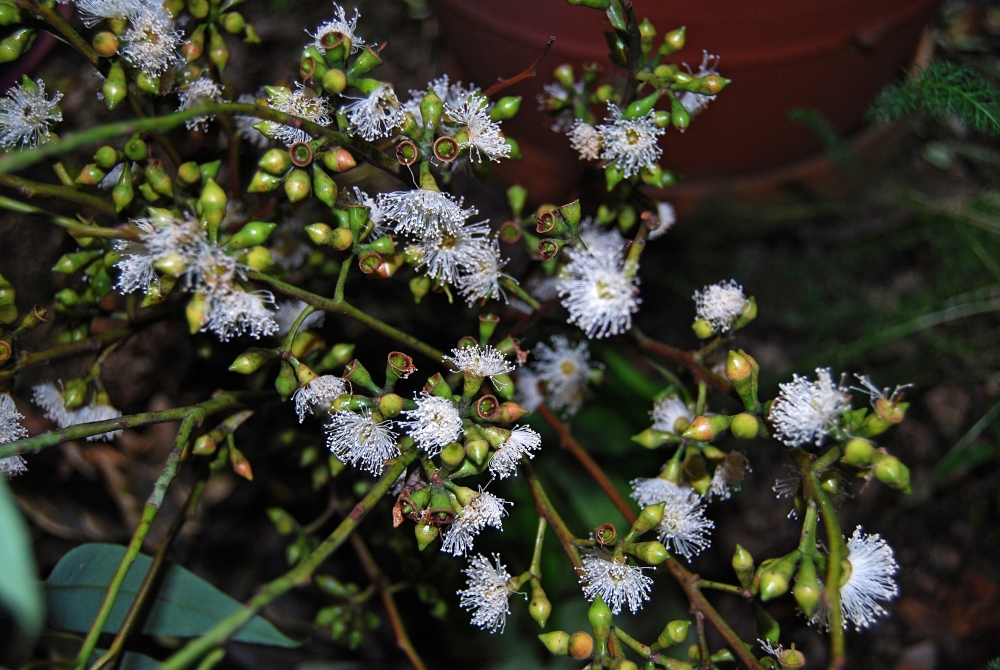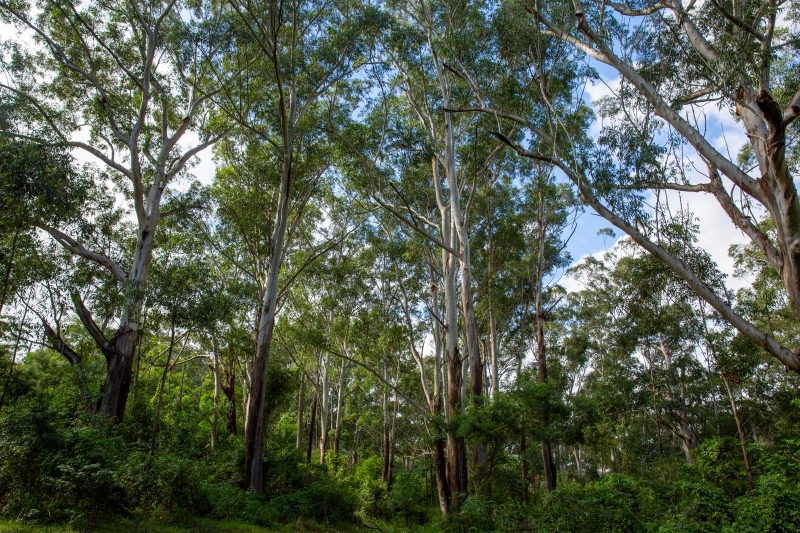About Subiaco Creek
As you walk through this area you are travelling amongst the Sydney Turpentine-Ironbark forest that is typical of the Dundas Valley’s remnant vegetation.
A special feature of the forest here in the Subiaco Creek Reserve is a rare stand of Blue Gum High Forest on the southern bank of the creek opposite Yeramba Place.
Today only scarce fragments of this forest type that was once common across the Sydney region remain. It is especially unusual to find it in such low-lying areas as occur here.
The tall open forests found across the Lower Ponds - Subiaco Creek Corridor are mostly home to medium sized birds that are found on open ground with little shrub cover.
Descriptions of these birds can be found on the track posts along the walk.

Blue Gum High Forest
Blue Gum High Forest is generally restricted to the north of Sydney, on shale based soils in areas receiving above average rainfall. Generally, it is found at elevations greater than 100m above sea level. Common tree species include Sydney Blue-Gum (Eucalyptus saligna), as well as forest oaks and red-gums. Trees in this type of forest are typically large, growing between 20 and 40 metres high.
Blue gum high forest typically includes tall, open canopy, with ground cover including a diverse mix of grasses, ferns and vines. This creates excellent habitat for a number of native species, including brush-tailed possums, flying foxes, and in some locations, even wallabies.
It has been estimated that prior to colonization, up to 3700 hectares of the Sydney Basin were made up of Blue Gum High Forest. It is currently estimated that less than 5% of this remains. Threats to current remnants include invasive weed species, such as lantana, passionfruit vine, and kikuyu grass.
Blue Gum High Forest is classified as a critically endangered community under the NSW Biodiversity Conservation Act 2016.



